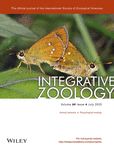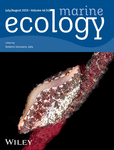Call for Papers
Snow leopard – a large cat with high potential for conservation success
Submission deadline: Sunday, 15 September 2024
Snow leopards (Panthera uncia) represent an iconic yet vulnerable species inhabiting some of the planet’s most remote and challenging terrains across Central Asia. Their distribution poses unique conservation challenges and opportunities. Since being listed as endangered (EN) by IUCN in 1986 (downlisted as vulnerable (VU) in 2017), substantial conservation efforts have largely contributed to reversing the decreasing snow leopard population trend over recent decades. The snow leopard's identity as an iconic and flagship species, coupled with local cultural values towards wildlife, minimal human modification in snow leopard habitats, and decades-long investments in monitoring and research projects, laid a solid foundation for effective conservation initiatives. Establishing national parks to safeguard continuous habitats and obtaining consistent support from local communities have been pivotal achievements. Following compensation policy for wildlife damage performed by governments, NGOs played vital roles in mitigating human-snow leopard conflicts arising from snow leopards’ livestock depredation. Coordinated surveys utilizing camera trapping, fecal DNA analysis and other effective measures have further secured conservation successes amidst the elusive nature and challenging terrains that snow leopards inhabit.
Looking ahead, this special issue seeks to evaluate current achievements comprehensively while charting the course for future snow leopard conservation. Emphasizing the role of ecosystem functions, advocating large-scale monitoring projects, encouraging application of new technologies, giving full play to indigenous people, and promoting data-sharing initiatives will be crucial in augmenting the effectiveness of conservation strategies.
We call for contributions from researchers, conservationists, and practitioners working in the field of snow leopard conservation. Articles encompassing diverse areas, such as long-term monitoring projects, national park contributions, climate impact studies, analyses of cultural influences, conflicts with local communities, comprehensive research reviews, and innovative proposals outlining a roadmap for future endeavors, are encouraged. Please refer to author guidelines above for the potential article types.
Topics for this call for papers include but are not restricted to:
- population dynamics
- snow leopard - prey relationships
- critical habitat assessments
- human-snow leopard interactions
- long-term monitoring initiatives
- conservation effectiveness evaluations
- application of new technologies to snow leopard conservation
- behavioral ecology
- reproductive physiology
Guest Editors:
Juan Li
Xi'an Jiaotong-Liverpool University
China
Lingyun Xiao
Xi'an Jiaotong-Liverpool University
China
Jiangyue Wang
Peking University
China
Hongliang Bu
Peking University
China
Qiaoqi Sun
Northeast Forestry University
China
Guoliang Pan
Green Infrastructure Institute of Shenzhen, Peking University
China
Keywords: Human-wildlife conflict and coexistence; large-scale monitoring; mountain ecosystems; transboundary conservation; species interaction; ecosystem functioning; climate change; community-based conservation; social-ecological systems; niche partitioning
Submission Guidelines/Instructions
Please refer to the Author Guidelines to prepare your manuscript. When submitting your manuscript, please answer the question: "Is this submission for a special issue?" by selecting the special issue title from the drop-down list.







